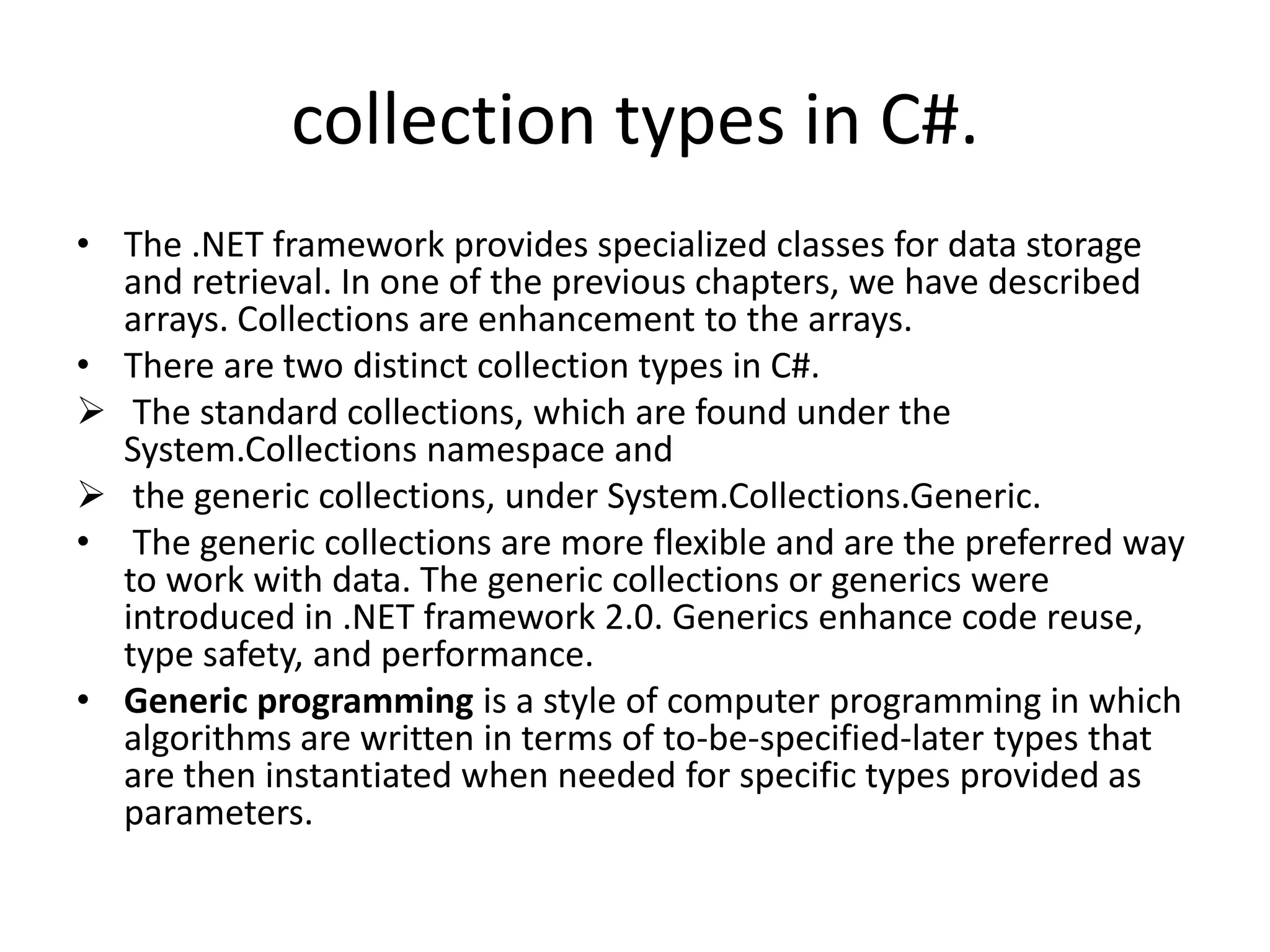The document discusses different collection types in C#, including arrays, ArrayList, List, LinkedList, Dictionary, Queue and Stack. It provides code examples to demonstrate how to create and use each collection type, and describes their key properties and methods. Generic collections like List provide stronger typing and are preferred over non-generic collections like ArrayList. Collections like Dictionary provide fast retrieval based on keys, while Queue and Stack access elements based on FIFO and LIFO principles respectively.





![List
langs.Add("Ruby");
langs.Add("Javascript");
Console.WriteLine(langs.Contains("C#"));
Console.WriteLine(langs[1]);
Console.WriteLine(langs[2]);
langs.Remove("C#");
langs.Remove("C");
Console.WriteLine(langs.Contains("C#"));
langs.Insert(4, "Haskell");
langs.Sort();
foreach(string lang in langs)
{
Console.WriteLine(lang);
}}}](https://image.slidesharecdn.com/collection-130310234934-phpapp01/75/Collection-6-2048.jpg)

![List
• Console.WriteLine(langs.Contains("C#")); We check if
the List contains a specific string using the Contains()
method.
• Console.WriteLine(langs[1]);
Console.WriteLine(langs[2]); We access the second and
the third element of the List using the index notation.
• langs.Remove("C#"); langs.Remove("C"); We remove
two strings from the List.
• langs.Insert(4, "Haskell"); We insert a string at a
specific location.
• langs.Sort(); We sort the elements using the Sort()
method.](https://image.slidesharecdn.com/collection-130310234934-phpapp01/75/Collection-8-2048.jpg)




![Dictionary
Dictionary<string, string> domains = new Dictionary<string,
string>(); domains.Add("de", "Germany");
domains.Add("sk", "Slovakia");
domains.Add("us", "United States");
domains.Add("ru", "Russia");
domains.Add("hu", "Hungary");
domains.Add("pl", "Poland");
Console.WriteLine(domains["sk"]);
Console.WriteLine(domains["de"]);
Console.WriteLine("Dictionary has {0} items", domains.Count);
Console.WriteLine("Keys of the dictionary:");
List<string> keys = new List<string>(domains.Keys);](https://image.slidesharecdn.com/collection-130310234934-phpapp01/75/Collection-13-2048.jpg)







